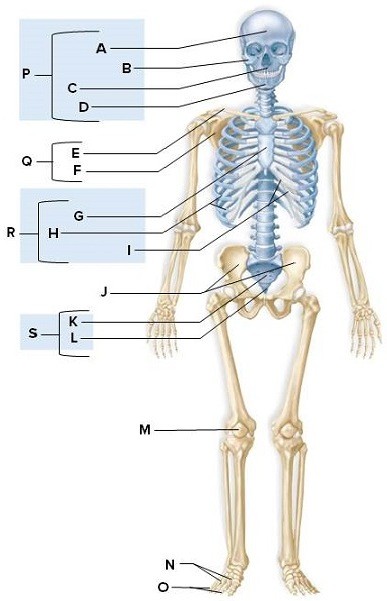Identify the labeled structures on the human skeleton in the picture.  A: ________B: ________C: ________D: ________E: ________F: ________G: ________H: ________I: ________J: ________K: ________L: ________M: ________N: ________O: ________P: ________Q: ________R: ________S: ________
A: ________B: ________C: ________D: ________E: ________F: ________G: ________H: ________I: ________J: ________K: ________L: ________M: ________N: ________O: ________P: ________Q: ________R: ________S: ________
What will be an ideal response?
A: frontal bone
B: zygomatic bone
C: maxilla
D: mandible
E: clavicle
F: scapula
G: sternum
H: ribs
I: costal cartilage
J: coxal bones
K: sacrum
L: coccyx
M: patella
N: metatarsals
O: phalanges
P: skull
Q: pectoral girdle
R: thoracic cage
S: pelvic girdle
You might also like to view...
Answer the following statements true (T) or false (F)
1. Slime molds possess characteristics of both fungi and protozoa. 2. Protozoa in the category known as Mastigophora move by means of cilia. 3. A dimorphic fungus would exist as a mold inside the human body. 4. The organism that causes a “red tide” is an alga. 5. Volvox is a multicellular alga.
There are no infectious agents that can penetrate intact skin.
Answer the following statement true (T) or false (F)
Why do we expect that postzygotic isolation will evolutionarily precede prezygotic isolation in the speciation process?
What will be an ideal response?
Plate tectonics has been responsible for instances of all of the following EXCEPT ________
A) volcanic explosions B) sympatric speciation C) allopatric speciation D) mass extinction